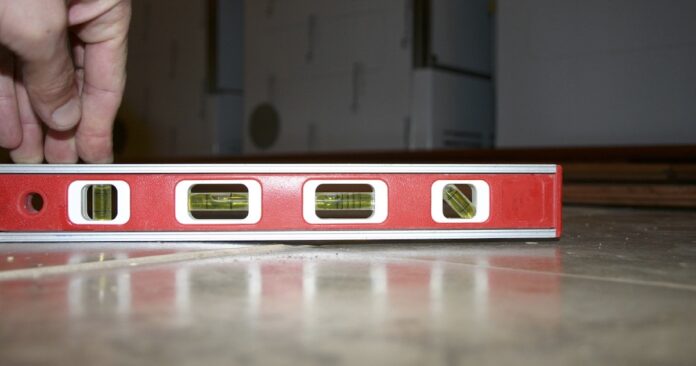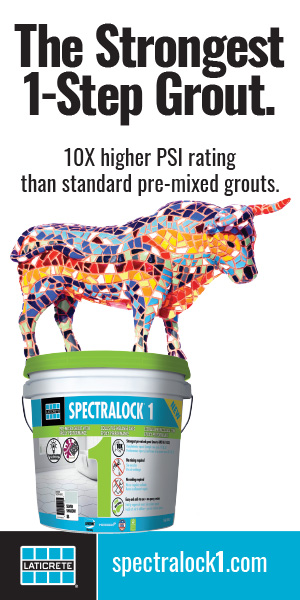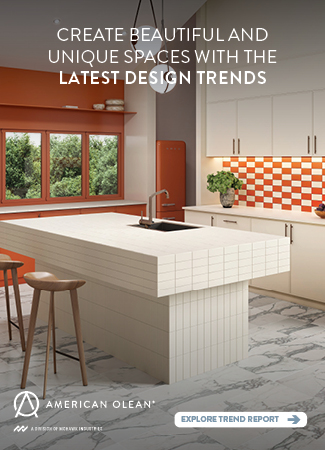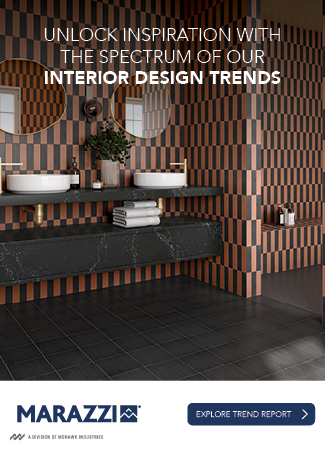The tile market today is loaded with a wide array of sizes and shapes that come in just about any color and texture imaginable, making the selection process challenging. Beyond the design process, comes the practical side of the actual installation of the tile along with meeting tile industry standards and best practices.
With the popularity of rectangular and plank tiles, comes the responsibility of installing them properly to produce a pleasing result and provide a surface that protects the people walking on it. Having a safe walking surface is important: if an accident occurs, someone is going to pay, and it’s going to be expensive.
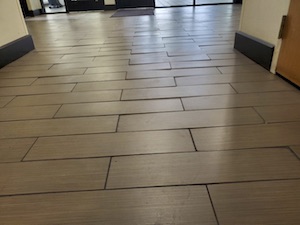

Warpage or bowing can take place during the manufacturing of fired tile products like ceramic and porcelain tile. The American National Standards Institute (ANSI) document A137.1 section 6.1 “Allowable Properties by Tile Type” provides table 8 for pressed floor tile and table 10 for porcelain tile, listing the allowable warpage of each category of tile. This is the standard the tile manufacturer must achieve to have the tile meet and/or exceed the allowable warpage standard.
The presence of warpage in a tile installation can manifest itself in unacceptable lippage. According to the ANSI standard A108.02 section 4.3.7, “Lippage refers to differences in elevation between edges of adjacent tile modules.” Likewise, the “Flatness and Lippage” section of the TCNA Handbook states, “Lippage is a condition where one edge of a tile is higher than an adjacent tile, giving the finished surface an uneven appearance. Lippage is inherent in all ceramic installation methods and may also be unavoidable due to the tile tolerances, in accordance with ANSI A137.1.”
33% offset recommendations for LFT
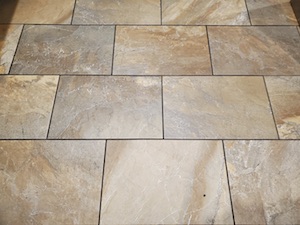

ANSI also provides the standards which guide the installation of ceramic tile (which includes porcelain) when the specified tile is 15″ or longer on any one side (popularly known as large-format tile or LFT).
ANSI A108.02 section 4.3.8.2 states the following: “Running bond/brick joint and any offset pattern: For running bond/brick joint or any other offset patterns (i.e., non-continuous grout joints) utilizing tile (square and/or rectangular) where the side being offset is greater than 15 in. (nominal dimension), only patterns with an offset of 33% or less shall be specified. If a pattern with an offset greater than 33% is desired, the specifier and owner must approve a mock-up and the resulting lippage.”
The purpose of this standard is to minimize lippage by moving the joint of two tiles from the middle of the adjacent tile. As seen in image # 1, the warpage of the centered tile was not significant and blended well with the two 50% offset tiles, resulting in no lippage. However, in a tile that is within the standard of allowable warpage, the high point of a tile (where warpage most times is pronounced) is centered on the low point of warpage (the two end joints) of two tiles. The result of 50% offset, as seen in image # 2, is both unsightly and can be a significant safety hazard.
In order to overcome lippage issues in a tile installation, whether it is on the floor or the wall, several patterns have been established that can aid in minimizing lippage.
Straight stack
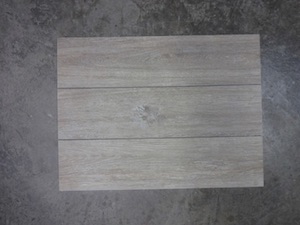

A tile pattern of square or rectangular tile that has grout joints aligning in both the north/south and east/west directions is known as a straight stack or stack bond. Here, lippage is almost non-existent since the high point of each tile is in line with the same high point of the next tile as evidenced in image #3.
The 33% offset reverse
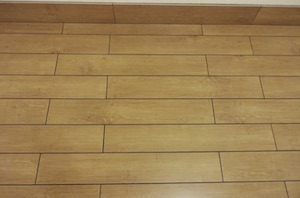

Rather than having the two low points adjacent to the high point as in a 50% offset, the tile in row one is moved to the one third point (33%) of the tile in row two. This pattern as seen in image #4 utilizes the 33% offset with the subsequent tile rows stepping back and forth in a zig/zag fashion. This pattern has a two-fold benefit; it reduces the lippage and looks really good.
The 33% offset stairstep
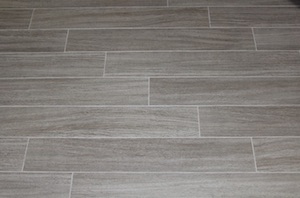

In this 33% offset stairstep pattern, rather than switching back and forth as in the 33% reverse, it continues in one direction forming a stairstep appearance. Additionally, this pattern can be modified to offset to a lesser degree such as 25%, 20% or even less. Each of these patterns gets the two low points closer to the low point of the adjacent tile yielding even less lippage.
Random pattern
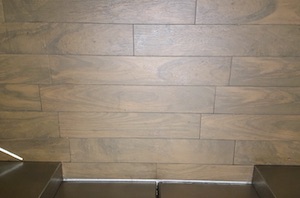

Many popular tiles today are woodgrain planks of various sizes. Like natural hardwood, the pieces are installed in a random pattern: whatever sized piece that comes out of the box next is installed as seen in image #6.
This pattern can work with woodgrain tile planks, but caution must be observed to eliminate the tile joints falling at the 50% point of the adjacent tile. For this pattern to be effective, the installer needs to diligently watch the pattern progression in order to control any lippage issues.
Mock-ups are a must!
No matter what tile is selected for an installation or which pattern meets the needs and desires of the consumer, it is always wise for the installer create a mock-up. A mock-up can be accomplished by simply dry-laying the tile in the selected pattern on a truly flat floor or any flat surface to be certain the end user will be satisfied with the end result. A more accurate mock-up includes the actual tile for the job (not samples) installed on a temporary substrate – such as a piece of backer board – to demonstrate the actual warpage that causes the lippage and its acceptance by the owner.
When a tile pattern is requested by the end user, all parties involved must perform their due diligence in order to obtain the finished product that is pleasing, safe, and long-lasting.


Scott Carothers
Scott Carothers is the Acdemic Director for the Ceramic Tile Education Foundation (CTEF) and is responsible for the creation of the Certified Tile Installer (CTI) program, and is involved in the creation of the Advanced Certifications for Tile Installers (ACT) program as well as providing training to others in the tile industry.
Carothers has been involved in the ceramic tile industry for nearly 40 years and was the owner of a successful retail and installation firm prior to CTEF. He has served as President and Chairman of the Board of the National Tile Contractors Association (NTCA), Chairman of the NTCA Technical Committee, was named the NTCA Tile Person of the Year in 2005, and the NTCA Ring of Honor recipient in 2013. He is a voting member of the ANSI and the TCNA Handbook committees.


